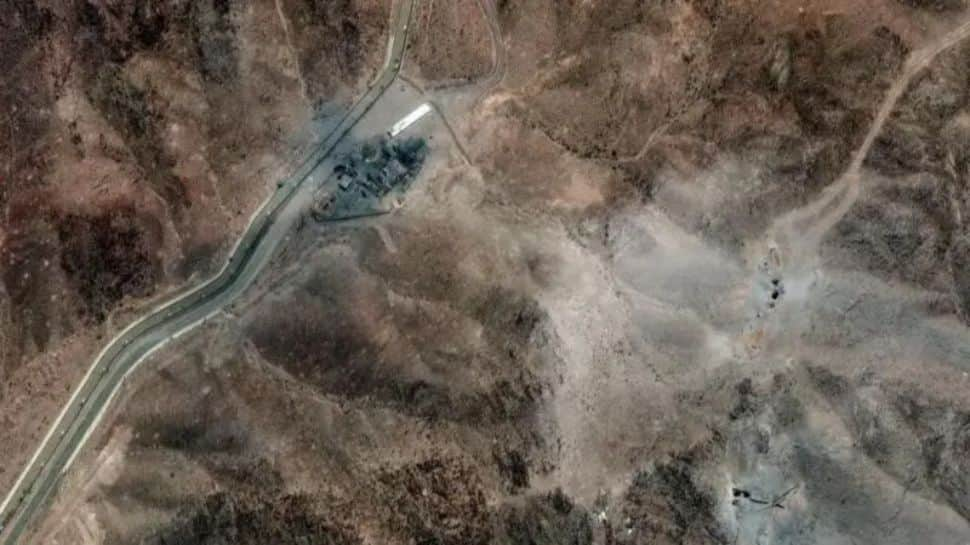How Much Damage Did US Airstrikes Really Inflict To Iran’s Nuclear Programme? | World News

New Delhi: The name Fordow has been whispered in intelligence circles for years. Buried deep under Iranian mountains, hidden from satellites, built to survive. Western agencies first exposed it in 2009. Since then, it has been one of the most closely watched nuclear sites in the world.
Now it is at the heart of a question echoing across diplomatic and defense briefings – did the U.S. airstrikes really obliterate Iran’s nuclear ambition?
A leaked U.S. Defense Intelligence Agency (DIA) report offers an early estimate. It suggests the attacks delayed Iran’s nuclear progress by months, not years. That matters. But it is far from decisive.
The report cautions that the estimate is tentative. Visibility is poor. Damage underground is difficult to assess. The facility was designed to be impenetrable, fortified with thick concrete and rock. Bombs fell. But they may not have breached the deepest chambers.
The bombs used were bunker-busters, deployed operationally for the first time. Massive. Powerful. Yet perhaps not powerful enough.
Satellite images show craters. Dust clouds. But the real work – the uranium enrichment – happens below. Centrifuges spinning at blistering speeds, refining uranium. Sensitive machines. Even shockwaves can knock them off alignment.
Some may be damaged. Many might still be intact.
Fordow was built for a moment like this. Just before the airstrikes, surveillance picked up truck movements. Several convoys left the site. What they carried is not confirmed. But signs suggest enriched uranium was moved.
Another site, known to insiders as “Pickaxe”, is drawing attention now. Iran might be relocating some centrifuges there. Possibly as backup. But the scale is unclear. It does not appear large enough to resume high-volume enrichment quickly.
Still, even with enriched uranium, Iran would need much more to build a bomb. Weaponisation. Delivery systems. Testing. All require extreme precision, time and expertise.
Before the strikes, Israel targeted and assassinated several Iranian nuclear scientists. That decision was part of a strategy. Not to stop the programme completely, but to slow it down.
So, what is the real impact?
U.S. officials say damage was done. But they admit key parts of the programme remain intact. The DIA’s report uses phrases like “limited degradation” and “temporary disruption”. The centrifuge halls may be offline. But the knowledge, the material and the intent have not disappeared.
Other tools are now in play. Seismic monitors might pick up underground blasts. Airborne sensors can detect radiation leaks. Intercepted messages may reveal internal panic or cover-ups.
Still, no concrete proof has surfaced yet.
Iran says its stockpile of 60% enriched uranium has been moved to safer locations. That level is alarmingly close to weapons-grade. Experts estimate Iran already has enough material for several bombs if it chooses to go that route.
In the final hours before the attacks, Iran announced a new underground facility was nearly operational. Its location remains secret. But its existence adds another layer of uncertainty.
The Iranian parliament recently voted to scale back cooperation with the UN nuclear watchdog, the IAEA. If passed into law, this would bring Iran closer to exiting the Nuclear Non-Proliferation Treaty.
Hardliners see this as an opportunity. They want Iran to walk away from global agreements. They believe survival lies in deterrence. And deterrence, for them, means a nuclear weapon.
Khamenei’s circle sees the attack as proof that negotiations cannot be trusted. But pragmatists inside the regime worry. They see isolation, more sanctions, more economic pain.
The airstrikes may have delayed Iran’s timeline. But they have not erased the programme. The material still exists. The expertise remains. And if Iran decides to rebuild, it knows how.
In the coming weeks, intelligence agencies will hunt for new clues. Drones will scan ridges. Satellites will comb shadows. Spies will listen for chatter.
If Iran resumes work secretly or openly, another clash may follow. This story is not over. It has paused for now.






